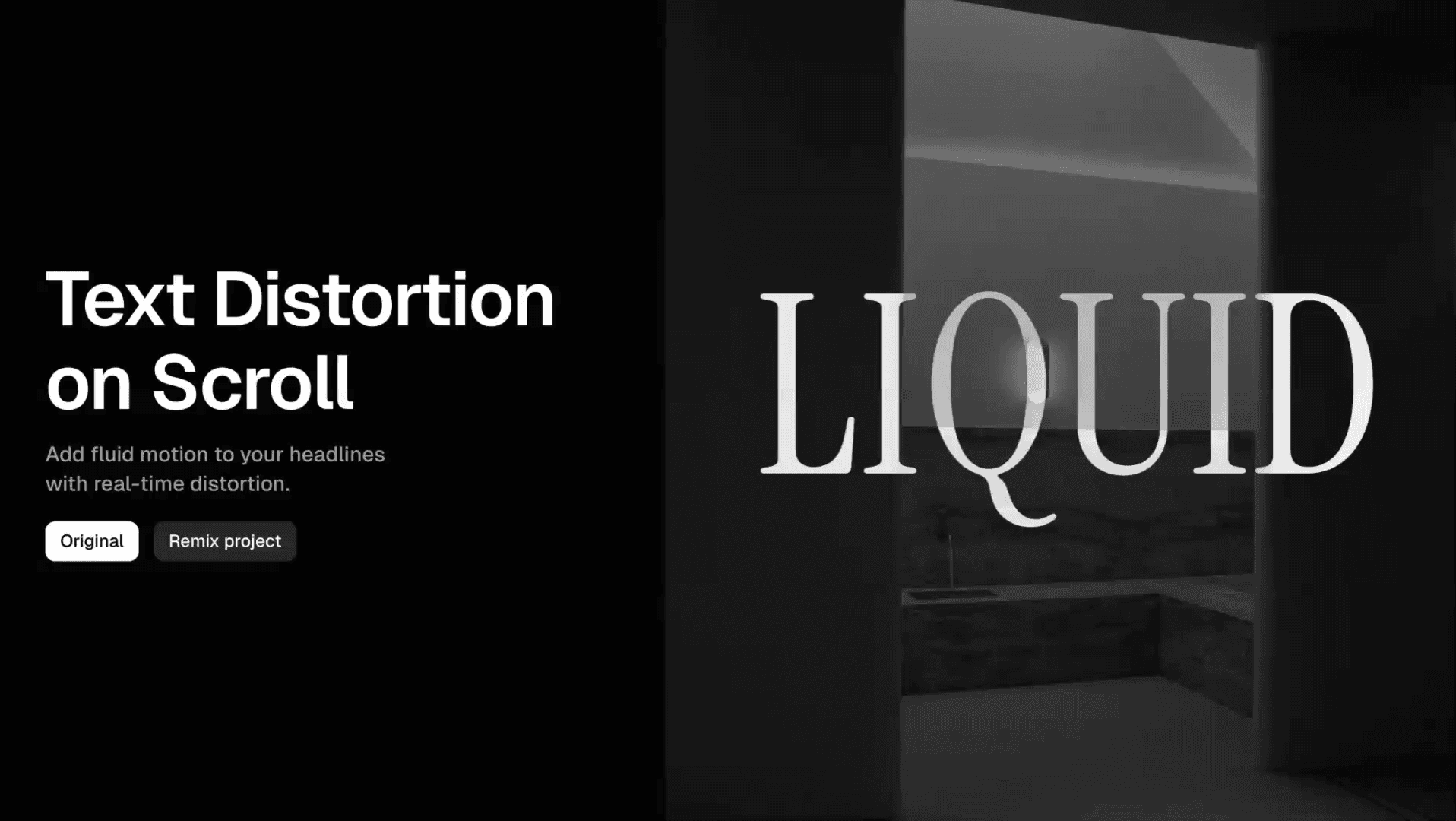Component
Shiny Button Component



About the resource
This effect mixes overrides with component variants.
First off, there's a layer inside the button that tracks the cursor thanks to a "Cursor-Follow" override when we hover over the button.
Next, we've got another override used on the button component. This one makes it scale down when clicked.
These overrides can be found in the remix, but if you want, you can also copy the code from below.
Cursor follow code override for Framer
If you want to take a look at how such a code override is built in Framer, feel free to copy this code from below and dig into it.
About the resource
This effect mixes overrides with component variants.
First off, there's a layer inside the button that tracks the cursor thanks to a "Cursor-Follow" override when we hover over the button.
Next, we've got another override used on the button component. This one makes it scale down when clicked.
These overrides can be found in the remix, but if you want, you can also copy the code from below.
Cursor follow code override for Framer
If you want to take a look at how such a code override is built in Framer, feel free to copy this code from below and dig into it.
About the resource
This effect mixes overrides with component variants.
First off, there's a layer inside the button that tracks the cursor thanks to a "Cursor-Follow" override when we hover over the button.
Next, we've got another override used on the button component. This one makes it scale down when clicked.
These overrides can be found in the remix, but if you want, you can also copy the code from below.
Cursor follow code override for Framer
If you want to take a look at how such a code override is built in Framer, feel free to copy this code from below and dig into it.

import type { ComponentType } from "react" import { useRef, useState } from "react" import { useEffect } from "react" import { useSpring, animated } from "react-spring" export function withCursorFollow(Component): ComponentType { return (props) => { const ref = useRef(null) const [isHovering, setIsHovering] = useState(false) const [originalPosition, setOriginalPosition] = useState({ left: 0, top: 0, }) const [centerPosition, setCenterPosition] = useState({ left: 0, top: 0, }) const springProps = useSpring({ left: isHovering ? originalPosition.left : centerPosition.left, top: isHovering ? originalPosition.top : centerPosition.top, config: { mass: 1, tension: 170, friction: 26 }, }) useEffect(() => { if (!ref.current) return const buttonRect = ref.current.getBoundingClientRect() const elementRect = ref.current.getBoundingClientRect() setCenterPosition({ left: buttonRect.width / 2 - elementRect.width / 2, top: buttonRect.height / 2 - elementRect.height / 2, }) const handleMouseMove = (e) => { if (!ref.current) return if (e.target.closest("button")) { setIsHovering(true) const buttonRect = e.target.getBoundingClientRect() const elementRect = ref.current.getBoundingClientRect() setOriginalPosition({ left: e.clientX - buttonRect.left - elementRect.width / 2, top: e.clientY - buttonRect.top - elementRect.height / 2, }) setCenterPosition({ left: buttonRect.width / 2 - elementRect.width / 2, top: buttonRect.height / 2 - elementRect.height / 2, }) } else { setIsHovering(false) } } window.addEventListener("mousemove", handleMouseMove) return () => { window.removeEventListener("mousemove", handleMouseMove) } }, []) return ( <animated.div ref={ref} style={{ position: "absolute", pointerEvents: "none", left: springProps.left, top: springProps.top, }} > <Component {...props} /> </animated.div> ) } }

import type { ComponentType } from "react" import { useRef, useState } from "react" import { useEffect } from "react" import { useSpring, animated } from "react-spring" export function withCursorFollow(Component): ComponentType { return (props) => { const ref = useRef(null) const [isHovering, setIsHovering] = useState(false) const [originalPosition, setOriginalPosition] = useState({ left: 0, top: 0, }) const [centerPosition, setCenterPosition] = useState({ left: 0, top: 0, }) const springProps = useSpring({ left: isHovering ? originalPosition.left : centerPosition.left, top: isHovering ? originalPosition.top : centerPosition.top, config: { mass: 1, tension: 170, friction: 26 }, }) useEffect(() => { if (!ref.current) return const buttonRect = ref.current.getBoundingClientRect() const elementRect = ref.current.getBoundingClientRect() setCenterPosition({ left: buttonRect.width / 2 - elementRect.width / 2, top: buttonRect.height / 2 - elementRect.height / 2, }) const handleMouseMove = (e) => { if (!ref.current) return if (e.target.closest("button")) { setIsHovering(true) const buttonRect = e.target.getBoundingClientRect() const elementRect = ref.current.getBoundingClientRect() setOriginalPosition({ left: e.clientX - buttonRect.left - elementRect.width / 2, top: e.clientY - buttonRect.top - elementRect.height / 2, }) setCenterPosition({ left: buttonRect.width / 2 - elementRect.width / 2, top: buttonRect.height / 2 - elementRect.height / 2, }) } else { setIsHovering(false) } } window.addEventListener("mousemove", handleMouseMove) return () => { window.removeEventListener("mousemove", handleMouseMove) } }, []) return ( <animated.div ref={ref} style={{ position: "absolute", pointerEvents: "none", left: springProps.left, top: springProps.top, }} > <Component {...props} /> </animated.div> ) } }

import type { ComponentType } from "react" import { useRef, useState } from "react" import { useEffect } from "react" import { useSpring, animated } from "react-spring" export function withCursorFollow(Component): ComponentType { return (props) => { const ref = useRef(null) const [isHovering, setIsHovering] = useState(false) const [originalPosition, setOriginalPosition] = useState({ left: 0, top: 0, }) const [centerPosition, setCenterPosition] = useState({ left: 0, top: 0, }) const springProps = useSpring({ left: isHovering ? originalPosition.left : centerPosition.left, top: isHovering ? originalPosition.top : centerPosition.top, config: { mass: 1, tension: 170, friction: 26 }, }) useEffect(() => { if (!ref.current) return const buttonRect = ref.current.getBoundingClientRect() const elementRect = ref.current.getBoundingClientRect() setCenterPosition({ left: buttonRect.width / 2 - elementRect.width / 2, top: buttonRect.height / 2 - elementRect.height / 2, }) const handleMouseMove = (e) => { if (!ref.current) return if (e.target.closest("button")) { setIsHovering(true) const buttonRect = e.target.getBoundingClientRect() const elementRect = ref.current.getBoundingClientRect() setOriginalPosition({ left: e.clientX - buttonRect.left - elementRect.width / 2, top: e.clientY - buttonRect.top - elementRect.height / 2, }) setCenterPosition({ left: buttonRect.width / 2 - elementRect.width / 2, top: buttonRect.height / 2 - elementRect.height / 2, }) } else { setIsHovering(false) } } window.addEventListener("mousemove", handleMouseMove) return () => { window.removeEventListener("mousemove", handleMouseMove) } }, []) return ( <animated.div ref={ref} style={{ position: "absolute", pointerEvents: "none", left: springProps.left, top: springProps.top, }} > <Component {...props} /> </animated.div> ) } }
Scale on click source code
Feel free to copy the code and create the code override from scratch in any of your projects.
Scale on click source code
Feel free to copy the code and create the code override from scratch in any of your projects.
Scale on click source code
Feel free to copy the code and create the code override from scratch in any of your projects.

import type { ComponentType } from "react" import { useState } from "react" export function onClick(Component): ComponentType { return (props) => { const [isClicked, setIsClicked] = useState(false) return ( <Component {...props} onMouseDown={() => setIsClicked(true)} onMouseUp={() => setIsClicked(false)} animate={ isClicked ? { scale: 0.99, y: 1.5 } : { scale: 1, y: 0 } } transition={{ duration: 0.1 }} /> ) } }

import type { ComponentType } from "react" import { useState } from "react" export function onClick(Component): ComponentType { return (props) => { const [isClicked, setIsClicked] = useState(false) return ( <Component {...props} onMouseDown={() => setIsClicked(true)} onMouseUp={() => setIsClicked(false)} animate={ isClicked ? { scale: 0.99, y: 1.5 } : { scale: 1, y: 0 } } transition={{ duration: 0.1 }} /> ) } }

import type { ComponentType } from "react" import { useState } from "react" export function onClick(Component): ComponentType { return (props) => { const [isClicked, setIsClicked] = useState(false) return ( <Component {...props} onMouseDown={() => setIsClicked(true)} onMouseUp={() => setIsClicked(false)} animate={ isClicked ? { scale: 0.99, y: 1.5 } : { scale: 1, y: 0 } } transition={{ duration: 0.1 }} /> ) } }






